- calendar_month April 19, 2023
Number seven is one LA-based interior designer’s “secret weapon” when staging a low light room.
In this article:
- Questions to ask yourself before you shop for plants
- What makes a plant a good fit for your home?
- 7 plants experts can’t live without
- Which plants should you buy if you’re planning to sell your home?
- Where is the best place to buy plants?
Plants can make a house feel like a home. They can make a statement, breathe life into a room and add a sense of calm. But the wrong plant can easily make a space feel off, and not to mention, test your patience.
Finding the perfect greenery for your climate, style and budget is a complex process — whether you’re decorating your first home or your apartment or you’re preparing to put your home on the market. And while it’s not a one-size-fits-all journey, there are some clear favorites. The experts we talked to had seven go-to plants that came up again and again. They shared what makes them so great, and their advice on how to pick your plants with confidence.
Say goodbye to the days of skeptically looking at plants in your local hardware store and say hello to your green thumb.
Let’s dive in.
Questions to ask yourself before you shop for plants
First and foremost, it’s important to get your priorities straight. Make a list that outlines your plant-related goals, and take your lifestyle choices and design taste into consideration:
- Are you looking for a unique plant that will make a bold statement?
- Or are you looking for something simple that will add a much-needed pop of color and breathe life into a room?
- How much time and effort are you willing to put into plant care?
- Does your space have a lot of natural light?
- How big of a plant are you looking for?
- What’s the climate like in your environment?
Knowing what you want can be difficult, but entering the plant-buying process with information and guidelines will make your journey smoother.
What makes a plant a good fit for your home?
When it comes to finding the right greenery for your space, you want to select plants that fit in four areas: style, scale, light and personal preference, Mary-Liz Lichtenfels, founder of Virginia-based boutique home staging firm Redesign by ML, says.
“Scale is an important design element,” Lichtenfels said. As you’re thinking about whether a plant you admire will work in a room, consider how it will relate to your furnishings.
Small end tables should be paired with smaller plants, for example, because a larger plant would look out of proportion, Lichtenfels says. If you have a room with a round coffee table, try a small surface plant as an accent to mirror the sphere scale of the table. A grand family room with a 10-foot ceiling may call for a tall tree in the far corner to make the most of the height of the room and tie your vision together.
Once you have a size in mind, think about whether your room is getting direct sunlight from a window, partial shade or is completely dark. Keep in mind you’re typically working with a shaded environment that’s consistently about 60-80 degrees Fahrenheit. You can mimic climate conditions like water and humidity in a room with the right maintenance routine, but getting the lighting right can make or break a plant. (Our experts outline lighting considerations for their picks below.)
Outdoor plant considerations
Choosing plants for your outdoor garden or to boost your curb appeal? Consider buying plants that are native in your area or perennials that are hardy year-round. More tropical plants, like palms and philodendrons, for example, can only survive in areas with relatively warm winters and hot summers. If you’re decorating your patio with a Bird of Paradise in the summer but you live somewhere that is known for cold winters, you’ll need to either get rid of your plant (which can be unsustainable and expensive) or bring it indoors when icy temperatures roll in.
If you’re not sure which plants are native to your area, head to a local nursery and ask to speak to a plant expert who can show you the ropes.
7 plants experts can’t live without
1. Boxwood Shrubs
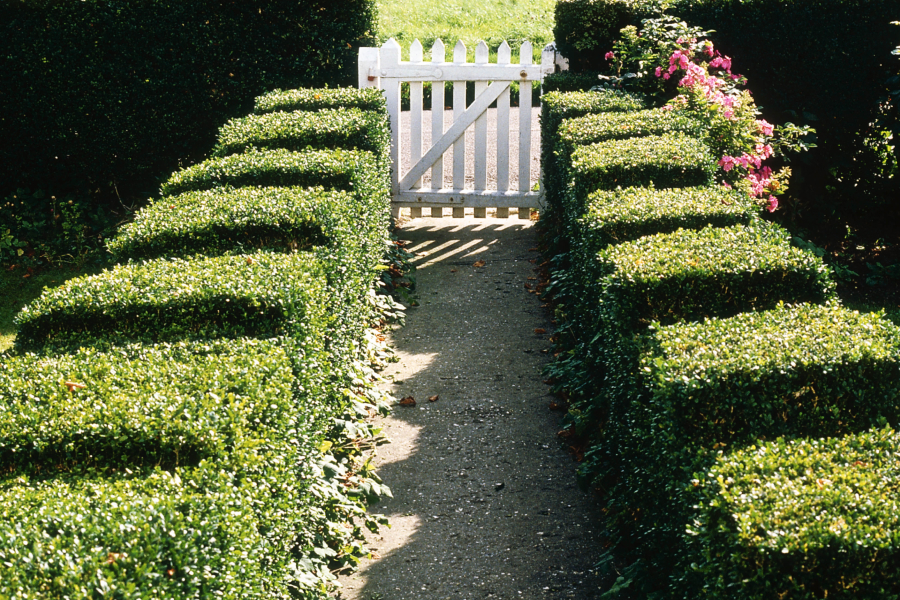 Nearly every expert we spoke to talked about how much they love using Boxwoods when they’re looking for a simple yet elegant landscaping option. These shrubs are a great, foolproof plant to lean on to add dimension to your yard without the hassle.
Nearly every expert we spoke to talked about how much they love using Boxwoods when they’re looking for a simple yet elegant landscaping option. These shrubs are a great, foolproof plant to lean on to add dimension to your yard without the hassle.
“If you’re looking to spruce up your home’s curb appeal and perceived value, a boxwood shrub is an excellent low-maintenance option,” Melinda Christman, co-founder of Olive + Opal Interiors, says.
Boxwood shrubs only grow up to about five inches per year, so you don’t have to worry about them growing too rapidly.
Light needs: Boxwood shrubs are particularly easy to care for and can thrive in either a full-sun or partly-shaded location, so they’re versatile. Simple yet robust, a boxwood will make your yard look put together and lusciously green without having to put in a ton of effort.
2. Olive Shrubs
 Olive shrubs work well with any style of home — from modern to more traditional and vintage — and they’re easy to take care of, says Los Angeles-based home stager and interior designer Francesca Chiloiro.
Olive shrubs work well with any style of home — from modern to more traditional and vintage — and they’re easy to take care of, says Los Angeles-based home stager and interior designer Francesca Chiloiro.
Kate Anne Gross, co-owner of landscape design and build company Kate Anne Designs, says olive shrubs are at the top of her list as great low-maintenance plants for first-time home buyers, and she’s not alone in that sentiment. Lichtenfels also likes to work with olives — trees rather than shrubs — for “strategic corners” in rooms indoors. They grow less than 12 inches per year, so you don’t have to worry about the plant getting too big for your space.
Strategic corners are particularly important to pay attention to when you’re selling your home, as the term refers to a spot that is a primary focus in listing photos.
Light needs: It’s important to note that olive trees need plenty of light, though, preferably through a south-facing window. This means they won’t do well in rooms that don’t receive direct sunlight throughout the day. And, while olive trees are beautiful, they aren’t necessarily the best long-term option. They can’t live indoors forever — only for eight to nine years — so depending on your home and lifestyle, it might be better to stick with shrubs and focus on planting them outdoors.
3. Snake Plants
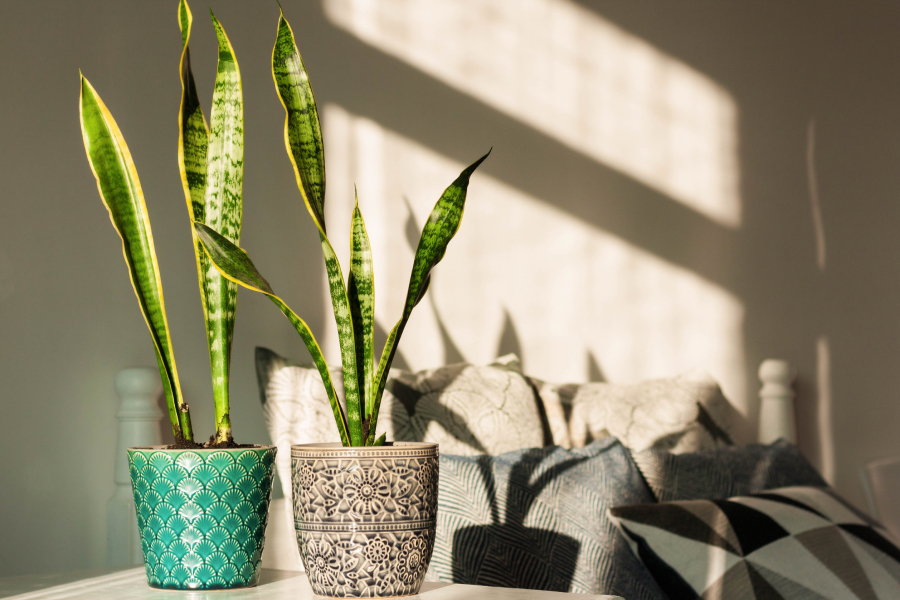 The snake plant is a classic favorite, Kaila Visconti, owner of North Carolina-based Curly Willow Design Company, says. And while snake plants don’t require much light or water and do well indoors, they can also survive outside during the warmer months if they’re placed in a shady spot.
The snake plant is a classic favorite, Kaila Visconti, owner of North Carolina-based Curly Willow Design Company, says. And while snake plants don’t require much light or water and do well indoors, they can also survive outside during the warmer months if they’re placed in a shady spot.
Snake plants are versatile and they grow pretty slowly, so when it comes to size, what you see is what you get. If you want a bigger snake plant, buy a larger one upfront. If you buy a small one and wait for it to grow, you’ll be disappointed.
These plants are versatile and they tend to be a go-to choice for mid-century modern homes. They can either blend in with your décor or make a statement on their own. This puts them high on the list of ideal low-maintenance plant options for first-time homeowners. They’re also budget-friendly: “They’re easy to take care of and can even be propagated from stem cuttings, which means you can get them for free from a friend,” Christman says.
Light needs: When it comes to this plant, you can get it and forget it. Snake plants don’t need a lot of sunlight and they can survive weeks without watering. It’s the ideal plant if travel is a big part of your lifestyle.
4. Peace Lilies
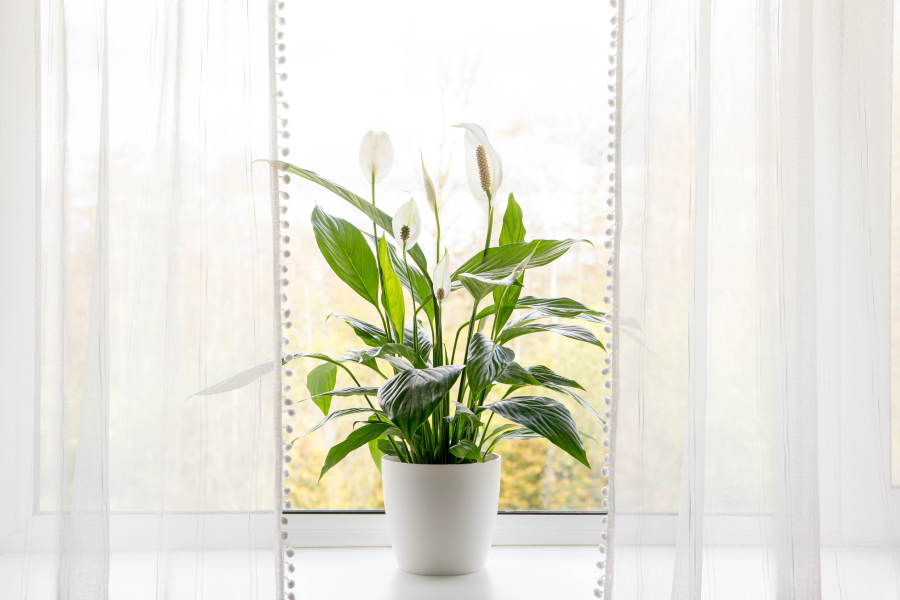 Peace Lilies are easy to care for and have the added benefit of providing a visual cue when they need water, Christman says. You don’t have to second-guess them, which is convenient if you don’t feel confident about your green thumb. “They’ll appear wilted but perk up right after a good drink,” Christman says. They practically yell, “Hey! It’s time to water me.”
Peace Lilies are easy to care for and have the added benefit of providing a visual cue when they need water, Christman says. You don’t have to second-guess them, which is convenient if you don’t feel confident about your green thumb. “They’ll appear wilted but perk up right after a good drink,” Christman says. They practically yell, “Hey! It’s time to water me.”
These plants grow at a moderate rate and reach maturity at around three to five years. You can buy smaller peace lilies that can be a great addition to a table or mantle, or you can invest in a larger one — that can grow to up to three feet — for a particularly empty corner in your home.
Light needs: These plants prefer light partial shade, but surprisingly, they can survive in rooms that don’t have a single drop of light. That means the Peace Lily would fit in that tricky corner in your dark bathroom that you’ve been wanting to spruce up.
5. Ferns
 Ferns do not grow flowers, so they’re a great, simple option if you’re trying to make a spot in your room feel a bit more green and luscious. Most ferns are easy on the wallet and skill set, Lichtenfels says, and while many people think of them as plants that hang on your front porch, they’re also a great indoor option for spots that will look good with a hanging planter. These plants have a fun, boho style to them, making them a low-key but noticeable addition to any room.
Ferns do not grow flowers, so they’re a great, simple option if you’re trying to make a spot in your room feel a bit more green and luscious. Most ferns are easy on the wallet and skill set, Lichtenfels says, and while many people think of them as plants that hang on your front porch, they’re also a great indoor option for spots that will look good with a hanging planter. These plants have a fun, boho style to them, making them a low-key but noticeable addition to any room.
Ferns grow relatively slowly, so buy the size that makes sense for your space. If you’re invested in its growth, you might find that you’ll be waiting for a while before you see results.
Light needs: Ferns thrive in indirect sunlight. An understated yet reliable option, ferns come in handy in rooms that have “shady nooks,” Opatovsky said, “which are abundant if you live on a grid-like street.”
6. ZZ Plant
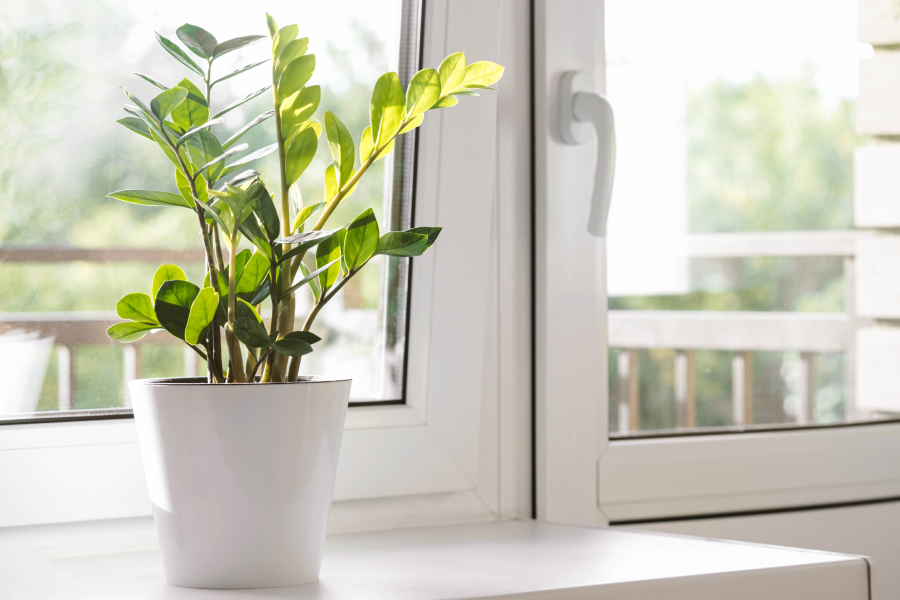 Visconti’s favorite indoor plant option is the ZZ plant (Zamioculcas Zamiifolia). “This plant has a very cool look — deep green and waxy leaves — and is practically unkillable,” she said. Unkillable? Say no more.
Visconti’s favorite indoor plant option is the ZZ plant (Zamioculcas Zamiifolia). “This plant has a very cool look — deep green and waxy leaves — and is practically unkillable,” she said. Unkillable? Say no more.
A client gave a 15-year-old ZZ plant to Visconti as a hand-me-down gift, and since then, she’s moved it three times into homes that all have different lighting situations. The ZZ plant thrived the most when it lived in a dark-ish corner and got about 15 minutes of direct light per day, she noted.
The ZZ plant grows pretty slowly, taking up to five years to reach its full size, but they can eventually reach up to three feet. With that being said, you might have to reconfigure its placement in your home once it reaches its full size.
Light needs: Opt for a ZZ plant if you’re trying to spruce up a room that doesn’t get a lot of direct sunlight.
7. Pothos
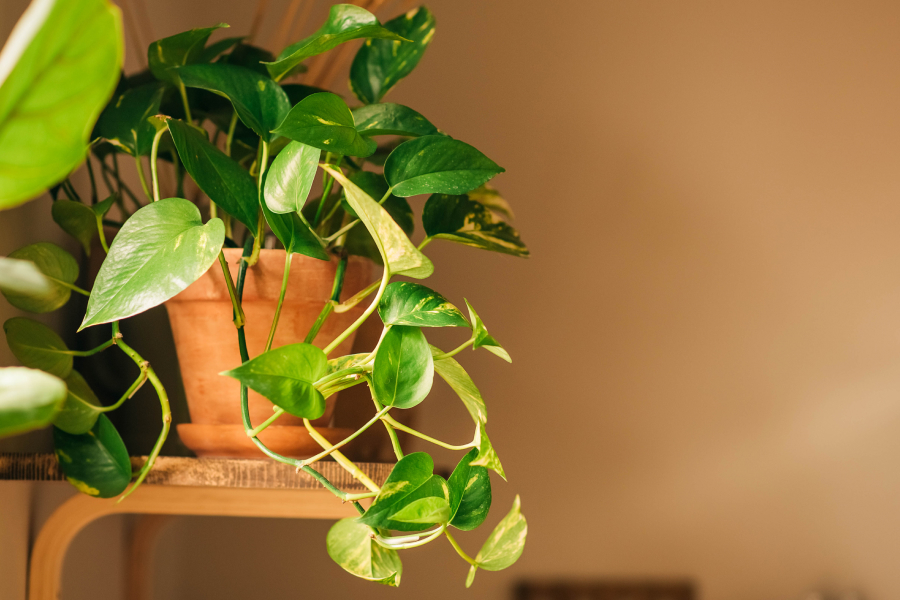 “Pothos are a great secret weapon,” Chiloiro says. This plant is a solid pick because it’s ultimately pretty low-maintenance across the board. Many home stagers love to use pothos because they add a nice dimension to rooms that don’t receive a ton of sunlight and they’re not temperamental when it comes to watering.
“Pothos are a great secret weapon,” Chiloiro says. This plant is a solid pick because it’s ultimately pretty low-maintenance across the board. Many home stagers love to use pothos because they add a nice dimension to rooms that don’t receive a ton of sunlight and they’re not temperamental when it comes to watering.
When it comes to décor and placement for pothos, they look beautiful draped over a counter top or hanging from a ceiling, Chiloiro says. The plant will grow at different rates depending on the humidity, temperature and light in any given environment, but you can expect them to get longer over time.
You’ll want to avoid incorporating pothos into your outdoor space, Chiloiro warns. While these plants are generally hassle-free, if they get too much direct sun, the leaves will burn and turn brown or black, which is irreversible.
Light needs: Since pothos don’t need a lot of sunlight in order to survive and thrive, they’re a great option if your home doesn’t get flooded with direct light during the day. If you live in a small and relatively dark New York City apartment, for example, a pothos is the perfect plant for you.
Which plants should you buy if you’re planning to sell your home?
There are so many plants to choose from when you’re thinking about landscaping, and the truth is, potential buyers will judge a book by its cover when they’re looking for a new home.
If you’re selling and you’re trying to make landscaping decisions, choose plants that reflect the architectural context of your home, Opatovsky recommends. “No one plant will fit every home’s style,” she added. If your home is more modern, try limiting your palette to a few grasses, shrubs and one type of tree.
If you have a more traditional home, try some of the classic perennial border plants like lavenders and sages.
Where is the best place to buy plants?
If you want expert advice, it’s best to head to a nursery or hardware store near you. But if budget is top-of-mind for you, seek out deals on Facebook Marketplace — where people sell their plants before moving — or at local grocery stores. You might be surprised to find that you can snag plants for free or for a super low price.
Of course, you can also buy plants online, on websites like The Sill or Lively Root.
